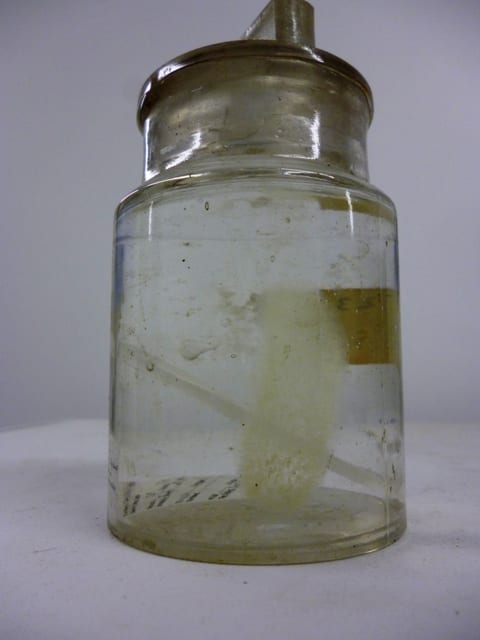Remember remember, the marine colonial tunicate Pyrosoma
By Simon J Jackson, on 5 November 2012
Firework night is upon us again and, as a multitude of rockets explode into a symphony of bangs, whistles and screams and shower cascades of light across the night sky, I thought it would be appropriate to highlight a particular ‘fire-body’ in our collection.
This ‘fire-body’, (Pyrosoma means fire-body in Greek hence this tenuous fireworks post), specimen (part of our Discovery Expedition Collection) at first would seem nothing special, resembling so much as a wisp of nothingness. For most of its life this specimen sits in the dark recesses of the stores awaiting the eyes of a keen visitor. Its cylindrical body is somewhat translucent and almost seems to float like a helpless apparition inexorably trapped within its glass walled confine. In life, however, it would have been a spectacular sight. Flashing bright blue-green, with waves of light pulsating back and forth, this little ‘fire-body’ would have lit up the vast darkness of the sea — as do our fireworks breathe light into the empty darkness of the night.
This natural light — termed bioluminescence — is created by many tiny individual organisms (zooids), joined together by a gelatinous tube or tunic, which comprise a colony, forming the cylindrical shape of the specimen. Flashing from some individuals trigger other flashes from their neighbours and so a wavelike effect of rippling light is created. This whole organic light show seems to be initially set off when one of the individuals in the colony is disturbed, closing off their intake siphons, through which they feed.
These colonies of ‘fire’ glide gracefully through the water — a planktonic lifestyle — though they are capable of jet-like propulsion as water drawn into each zooid (constituting feeding currents) is forcefully pushed through the outward opening in the colony’s tunic.
See here for images of Pyrosoma in all its glory.
 Close
Close


